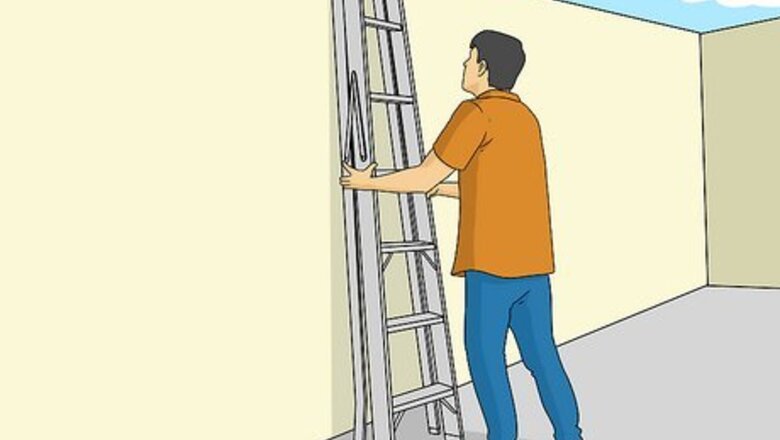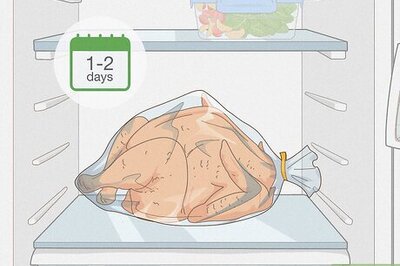
views
Using The Ladder

Raise the ladder. Hold the ladder so that each foot is planted firmly against the ground. Lift the top of the ladder and walk towards the wall. If you have an extension ladder, raise the rungs, either by hand or by using the rope and pulley wheel.

Set the ladder at a 75° angle with the ground. The simplest way to achieve this is by standing with your toes touching the feet of the ladder and extending your arms forward. Your palms should be able to reach a rung of the ladder when your arms are fully extended. If the angle is too steep, the ladder could tip backward; too shallow and it could slide out or bend in the middle. You can also achieve this angle by pulling the feet of the ladder away from the wall about ¼ of the total length of the ladder.

Make sure the feet are secure. Always place feet parallel to the wall and on firm, level ground. It is never safe to place your ladder on top of any objects to gain additional height. On soft ground, flip the ladder feet up to expose the spurs and stomp on the bottom rung to penetrate the ground. On uneven ground, a ladder leveler is the only safe way to effectively extend one leg of the ladder. If possible, you can also bolt a cleat into the ground behind the feet to aid against slipping.

Make sure the top of the ladder is secure. Both side rails should be equally supported and placed on an even surface. The ladder should not slide or wobble when you put weight against it. Whenever practical, tie off the top of the ladder to further secure it to the wall. If the ladder is fully extended, you may want to tie off the midsection as well.

Climb the ladder maintaining three points of contact. You should always climb one rung at a time, moving only one hand or one foot at a time. Always face the ladder as you climb, and only use the rungs to climb opposed to the side rails.
Taking Extra Precautions

Utilize accessories to help stabilize the top of the ladder. There are a variety of tasks that call for a ladder, and a variety of accessories for the top of ladders that can help you more easily and safely complete those tasks. Soft "mitts" that slip over the top of the side rails can provide extra grip and protect the surface from damage done by the ladder. Ladder stabilizers basically widen the points at which the top of the ladder rests. This can be useful to protect fragile siding or to clear the width of a window. Single support attachments are necessary whenever the ladder is leaned against a surface narrower than the width of the ladder, like a telephone pole. They mount to the ladder above the top rung between the two side rails.

Avoid aluminium ladders when working with electricity. Aluminium ladders tend to be the lightest weight, but they are also electrical conductors. So whenever you need to place your ladder near a live electrical line or fixture, or even when working with corded power tools, it is best to use a wooden or fiberglass ladder, as neither are electrical conductors. Even if you are using wooden or fiberglass ladders, try to avoid coming into contact with any electrical wires.

Inspect your ladder for damage often. Checking all the moving parts, like feet and rung locks, as well as the overall integrity of the ladder, can prevent the worst of accidents. It’s also important that the ladder is clean of any foreign substances that could be slippery, sticky, corrosive, conductive, or otherwise an added hazard to using the ladder.

Refer to your ladder’s safety label. All ladders are sold with a label on the outside of one of the side rails that details the ladders max length, duty (or max weight), and other helpful safety information. Remember that max weight includes the weight of your body, clothes, tools, and any accessories attached to the ladder.



















Comments
0 comment